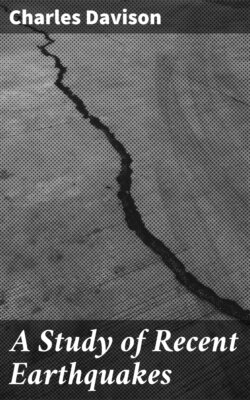Читать книгу A Study of Recent Earthquakes - Charles Davison - Страница 8
На сайте Литреса книга снята с продажи.
ORIGIN OF EARTHQUAKES.
ОглавлениеEarthquakes are grouped, according to their origin, into three classes. The first consists of slight local shocks, caused by the fall of rock in underground passages; the second of volcanic earthquakes, also local in character, but often of considerable intensity near the centre of the disturbed area; while in the third class we have tectonic earthquakes, or those directly connected with the shaping of the earth's crust, which vary in strength from the weakest perceptible tremor to the most destructive and widely felt shock. Of the earthquakes described in this volume, the Ischian earthquakes belong to the second class, and all the others to the third.
That tectonic earthquakes are closely connected with the formation of faults seems now established beyond doubt. They occur far from all traces of recent volcanic action. Their isoseismal lines are elongated in directions parallel to known faults, and this is sometimes the case in one and the same district with faults that occur at right angles to one another. Indeed, when several isoseismals are carefully drawn, it is possible from their form and relative position to predict the position of the originating fault.[2] The initial formation and further spreading of the rent may be the cause of a few earthquakes, but by far the larger number are due to the subsequent growth of the fault. The relative displacement of the rocks adjoining the fault, which may amount to thousands of feet, occasionally even to miles, is the result, not of one great movement, but of innumerable slips taking place in different parts of the fault and spread over vast ages of time. With every fault-slip, intense friction is suddenly brought into action by the rubbing of one mass of rock against the other; and, according to the modern view, it is this friction that gives rise to the earthquake waves.
In most earthquakes, the slip takes place at a considerable depth, perhaps not less than one or several miles, and the vertical slip is so small that it dies out before reaching the surface. But, in a few violent earthquakes, such as the Japanese and Indian earthquakes described in this volume, the slip is continued up to the surface and is left visible there as a small cliff or fault-scarp. In these cases, the sudden spring of the crust may increase and complicate the effects of the vibratory shock.
